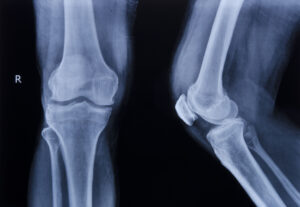
Broken bones are relatively common injuries, but they can have a serious, long-lasting effect on a person’s life. Regardless of whether it’s a minor fracture or a complete break, the physical, emotional, and financial toll in the aftermath can be overwhelmingly stressful.
In Portland, accidents that lead to broken bones can happen in a variety of contexts. The impact depends on the circumstances and severity of the trauma. Anyone dealing with a fractured bone in the wake of an accident that wasn’t their fault needs to understand what caused their bone to break, the treatments involved, and the legal implications if they intend to file a claim.

Not all broken bones are created equal. There are several types of fractures, and they are defined by their pattern, cause, and location. Each one requires a unique approach to treatment.
Some of the more common kinds of fractures include:
It’s important to know the type of fracture you have so that you can better understand your treatment plan and expected recovery time. Severe fractures can sometimes cause permanent damage or disability, so they need to be addressed promptly and thoroughly.
Portland’s bustling city atmosphere, unfortunately, also makes it a place where a wide range of accident types can happen.
Some of the more common ones that lead to broken bones include:
Bones tend to break in situations where an impact happens suddenly and unexpectedly. They’re often quite serious and need immediate medical attention, particularly in major accidents and when the bone is visible.
Treating a broken bone depends on the type of fracture and its severity. The main goals are to realign the bone so it can heal properly and manage the pain.
There are a few main ways that fractures are treated. One is immobilization with a cast, splint, or brace to keep the bone in the correct position until it heals. The length of time depends on the bone and how it broke.
Another method is traction, or the use of a pulling force to realign the bone. A fracture might also require surgery if it’s severe enough, especially if it’s open or displaced. Surgical procedures could involve the use of metal plates, screws, or rods to hold the bone until it’s healed.
Additionally, physical therapy could be necessary to restore strength, flexibility, and range of motion to the injured area. The pain from broken bones is frequently managed with over-the-counter or prescription medications or nerve blockers.
The exact healing time varies across different types of fractures. Small or minor breaks and cracks can heal in as little as six weeks, but more severe breaks could take months or even over a year. In some cases, complications like infections, blood clots, and delayed healing can pop up and make the process take longer than it might otherwise.
Most people will completely recover from a broken bone. Unfortunately, others could end up with long-term consequences and permanent disability. Chronic pain can remain a problem long after the bone has healed, and if the break happens near a joint, it could lead to stiffness and reduce your range of motion or mobility.
Improperly healed bones often cause permanent deformities. Fractures that directly involve a joint can contribute to severe osteoarthritis later in life (sometimes called post-traumatic arthritis). Severe breaks can cause trauma to nearby nerves or blood vessels, leading to other health concerns.
If you’ve suffered a broken bone because of someone else’s negligence, you might have the right to file for compensation. In Oregon, personal injury law lets victims recover damages for medical costs, lost wages, pain and suffering, and other related losses.
To pursue compensation, you’ll need to prove certain legal elements, including:
In cases with broken bones, medical evidence plays a major role in proving the extent of your trauma and how it has affected your life. You’ll need to document your treatment, follow your doctor’s advice, and keep records of all of your costs related to the injury.
Additionally, Oregon has a statute of limitations that limits the time you have to file a personal injury lawsuit. Most of the time, the deadline is two years from the date of the injury. However, certain exceptions might apply, so it’s a good idea to talk to a lawyer so that you file within the applicable timeline.
If you’ve received a fracture in the aftermath of an accident, contact us at (503) 773-3333 and schedule a free consultation with Tillmann Law Personal Injury Lawyers to discuss your broken bones and the compensation you can seek for them.